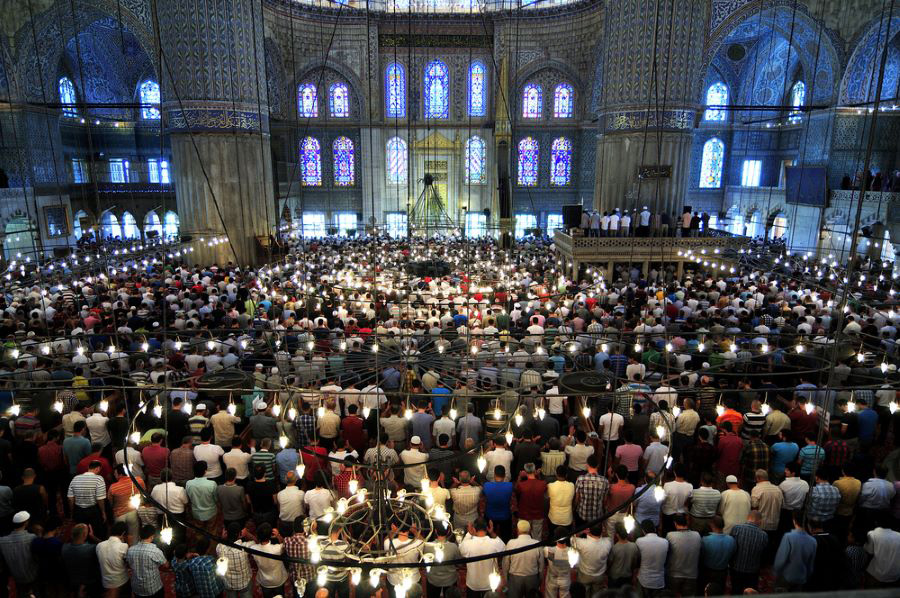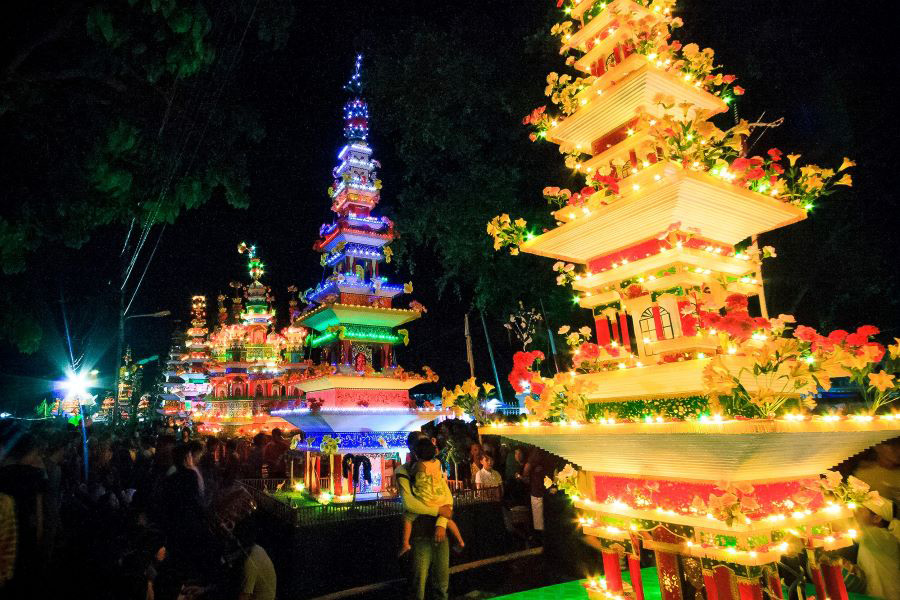Date: August 19th – 20th, 2020

Awal Muharram or Hijri New Year is celebrated by Muslims as the day symbolises two important events in the Islamic year. Awal means beginning and Muharram is the name of the first month in the Muslim calendar. The first day of Muharram is therefore the Islamic New Year’s Day and on this date the Hijra, the historic journey from Mecca to Medina began. It is also seen as the second holiest month, the first being Ramadan.
A day in the Islamic calendar is defined as beginning at sunset. The celebration will begin in the evening of the first day and end in the evening of the new moon day.
To mark Muharram, Muslims will recite Koranic verses and hold special prayers and sermons at public halls and mosques. The New Year itself is known to Muslims as Maal Hijra.
The customs of Awal Muharram vary from country to country, though they generally involve attending various religious activities, spiritual singing and religious meetings. The traditions and customs for Muharram also vary between Shia and Sunni Muslims. For both, the marking of the beginning of the new year is usually quiet, unlike New Year’s celebrations associated with other calendars. It is a time for Muslims to reflect on the passing of time and their own mortality.
Which countries in Southeast Asia celebrate the Islamic New Year?
MALAYSIA: The constitution of Malaysia establishes Islam as the religion of the Federation as around 61.3% of the population practice Islam. During religious gatherings in Malaysia, on Awal Muharram, believers discuss verses from the Quran, sing religious tunes, and compose extraordinary petitions and different sermons both in private and in mosques. Revellers prepare sweet rice, referred to as Bubur Asyura (Asyura porridge), and eat it together with friends and relatives for breakfast.
Top gran mosques in Kuala Lumpur:
- National Mosque of Malaysia (Masjid Negara): is well-regarded as the nationwide symbol of Islam.
- Masjid Jamek Mosque: was built in 1907, making it the oldest Islamic place of worship in Kuala Lumpur.
- Blue Mosque Selangor: is hailed as Malaysia’s largest mosque.

INDONESIA: Indonesia is the world’s most populous Muslim-majority country with 227 million adherents (86.7%) in 2017, with the majority being Sunnis (99%). Islam was introduced by Sunni traders and for the most part, Islam overlaid and mixed with existing cultural and religious influences that resulted in a distinct form. The celebration of Islamic New Year is also held in several regions in Indonesia with quite unique. Here are some traditions of Islamic New Year in Indonesia like as Nganggung in Pangkal Pinang (bringing a complete meal on a brass tray covered with a serving hood), Tabot in Bengkulu (parade a giant object named Tabot around the village), Kebo Bule in Surakarta (to parade the Kebo Bule which is actually an albino buffalo surrounding the city), washing a weapon in Java, Mubeng Beteng in Yogyakarta Palace (walking around four corners of the fortress of Yogyakarta Palace in silent), Kungkum (meditating while submerged in water, usually in river or lake) or Lek-lekan (not sleeping through the night)…
Top gran mosques in Indonesia:
- The Grand Istiqlal Mosque (Jakarta): is recognized as the largest mosque in Southeast Asia.
- Masjid Ibnu Batutah (Nusa Dua, Bali): this is perhaps the only of its kind in the world that honours religious tolerance as is right next to a Hindu temple and a Christian church.
- Masjid Agung Praya: is the largest mosque in Central Lombok regency.
- Kauman Great Mosque (Yogyakarta): Established in 1773, Kauman Great Mosque is one of the oldest mosques in Indonesia.

PHILIPPINES: In Philippines, Islam is the second largest religion (estimated 5.6%). The majority of Muslims live in Mindanao and nearby islands. Most practice Sunni Islam under the Shafi’i school. The Islamic New Year here names Amun Jadid and is a public holiday. Muslims cselebrate this day by participating in group prayer recitals at mosques and observe fasting starting on this day for 4 to 5 days onwards. People in the community gather at the mosques for morning prayers, after they have performed their ablutions and wear new clothes to welcome the Islamic New Year.
Top gran mosques in Philippines:
- The Golden Mosque (Masjid al-Dahab): is one of Manila’s largest mosques and is central to Quiapo’s vibrant Filipino Muslim enclave.
- Sheikh Karim al Makhdum Mosque (Simunul island, Tawi-Tawi): established in 1380 and considered as a National Historical Landmark, it is the oldest existing mosque in the country.
- Dimaukom Mosque (The Pink Mosque): With the land and money donated by the town mayor of Maguindanao, the mosque was built in the middle of a field, worked upon by both Muslims and Christians in a show of solidarity. The mosque’s unusual color was chosen to reinforce this spirit of love, unity, and peaceful coexistence.
HAPPY MUHARRAM!
